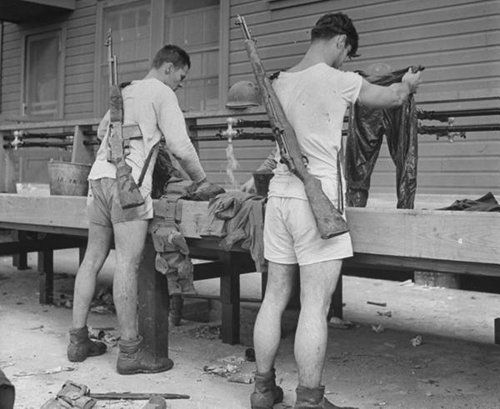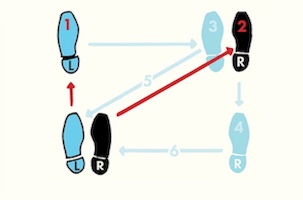
There are a lot of articles on the internet that will fill you in on the mistakes you’re probably making with your laundry routine, and how to improve it.
You’re likely using too much detergent, which wastes money, while creating a build-up on your clothes that actually makes them stinkier. Try using half as much and see if that still cleans your clothes.
Zip up the zipper on garments before you wash them, as the teeth can snag on other clothes.
Try ditching your dryer sheets (which, contrary to popular belief, don’t actually soften clothes, but rather leave a chemical film on them which makes them feel softer) and use wool balls instead. (Despite the emergent popularity of this tip, the reality here is that while the reusability and naturalness of wool balls is nice, they don’t actually work as well as softener sheets, even as well as a third of a softener sheet — especially in eliminating static. You’ll have to decide if the tradeoff is worth it.)
In these scintillating discussions about how to improve your laundry routine, however, there is a tip that never comes up, but ought to be more widely known: creating a place for your “in-between” clothes.
Not all clothes need to be washed after every time you wear them. Cotton garments, t-shirts, stuff you wear close to your body, do typically need that treatment. But stuff you wear on your lower body (like jeans), and things made of naturally odor- and soil-resisting wool (like sweaters), certainly don’t. Ditto, of course, for things you just put on for an hour-long Zoom meeting, and then take off again. Washing your clothes every time you don them simply creates more loads of laundry and wears them out faster.
Check this handy chart for how long you can go between washing different items of clothing.
But what do you do with clothes that aren’t dirty enough to wash, but aren’t as pristine clean as the other clothes in your closet?
You don’t want to fold them up and put them right back in with your clean-clean clothes; they may need to be aired out, you may not want their slight dinge to transfer to those other clothes, and it’s nice to be able to keep track of which clothes have already been halfway soiled; doing so reminds you that you’ll probably need to wash the garment the next time you wear it, and to choose something else for situations where you may want to be totally fresh (e.g., a first date).
But, you don’t want to throw these in-between clothes in the hamper with your dirty-dirty clothes either, since the latter will transfer their dinge to the former, making them smellier and dirtier. Nor do you want them to get all wrinkled up.
Perhaps you end up draping your in-between clothes on the sides of the hamper. But that causes confusion when you go to do your laundry; you can’t remember if that shirt is hanging on the basket because it’s halfway dirty, or it’s dirty-dirty and didn’t make it all the way in when you threw it.
Or maybe you just kind of leave your in-between clothes in piles on the floor, or hang them over chairs, but this creates wrinkles and/or clutter.
The better method is to create a dedicated storage/organizational solution for your in-between clothes. If you don’t care about airing stuff out, just get a horizontal laundry basket, which will be separate from your dirty-dirty clothes basket, and when you take off a garment that you’ve worn, but doesn’t yet need washing, fold it up and put it in that basket. If you would like to air things out, and have room in your closet, get a laundry drying rack, with a small footprint, like this one, and drape your halfway dirty clothes on it, awaiting future wear. Clothes you originally took off a hangar can of course go back on the hangar, hung apart from your clean-clean clothes.
By creating a place for your not-quite-dirty, not-quite-clean clothes, you’ll save time by cutting down on the amount of laundry you do, and save money by extending the lifespan of your clothes, all while keeping your closet neat and organized.
Want more tips for effectively doing your laundry? We’ve got a complete guide here.







